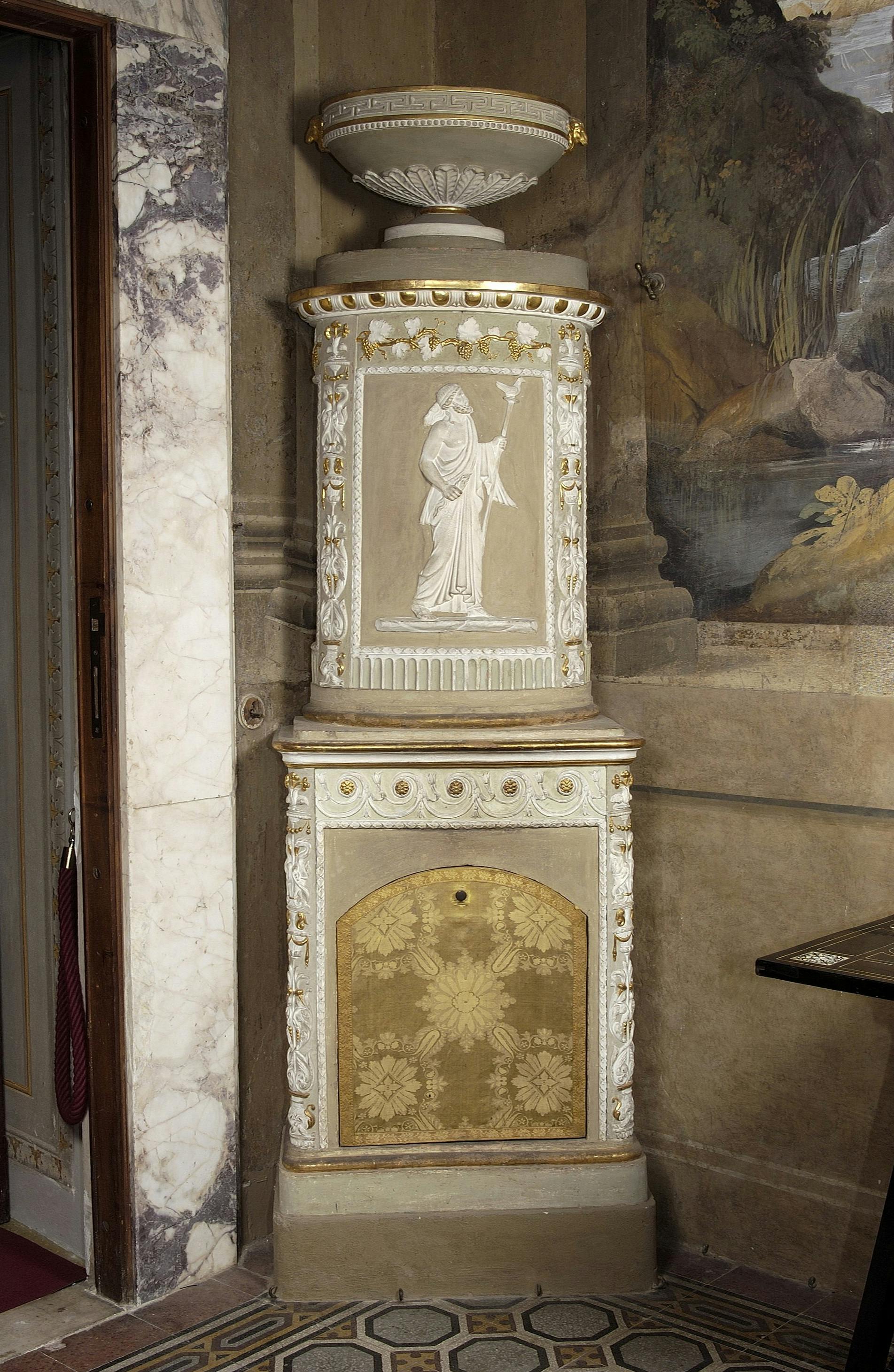“Fireplace” stoves
Ginori Factory, Doccia
The Grand Duke of Tuscany Pietro Leopoldo introduced the Nordic tradition of stoves to the Florentine court of Pitti Palace to heat rooms, as an alternative to fireplaces. He called in Austrian craftsmen specialising in this production to be sent to the Doccia Factory, where the first specimen was made in 1765 to be located in the Quartiere di Pietro da Cortona (Pietro da Cortona Quarters). The ambitious intention of founding a “Stove and Majolica Factory” was implemented in 1767 at the premises in Borgo Pinti, where the house of the court sculptor was located, equipped with a kiln that had been used two centuries earlier by Giambologna and later by Giovan Battista Foggini to bake clay models. However, technical problems related to the malfunctioning of this furnace, the limited knowledge of stove-making on the part of local craftsmen, and the poor fortune of this type of production in Tuscany, led to the closure of the factory as early as 1775.
Pietro Leopoldo’s successor, Ferdinand III Habsburg-Lorraine, reinstated this work, as confirmed by an expense note from the Doccia Factory in 1793, regarding the gilding of a stove 'for His Royal Highness'. Despite the Grand Duchy’s interest, these practical objects did not find popularity in the city, as confirmed by the inventory of models and forms at the factory, which in 1791 recorded the production of stoves together with that of fireplaces in a single room, moreover occupied by a single 'worker'. It was at the same time as Ferdinand III’s return from exile that there was a considerable increase in the manufacture of “column” and “fireplace” stoves at Doccia, as revealed by the tomes of the Warehouse Registry between the years 1816 and 1818. This is also confirmed by the Gallery of Models. The general catalogue dates from the end of the 19th century, in which a sampler of at least seventy-seven stove decorations is noted, with recurring ornaments often assembled in different ways.
Although lacking in information on the subject, documentation on the Ginori Factory’s activities in the 1820s and 1830s reveals an increase in the production of “column” stoves, some of which could be identified in the examples still preserved in Palazzo Corsini in Via del Parione in Florence. Models of “column” stoves are also to be found in the furnishings of the Palatine Gallery and the Appartamenti monumentali (Monumental Apartments) in Pitti Palace. Those most probably attributable to the Ginori Factory are the two ‘fireplace’ stoves: one located in the Allori Loggetta and the other in the Sala della Temperanza (Temperance Room) in the Quartiere degli Arazzi (Tapestry Quarters), also on the first floor of the palace. Both are made of terracotta, with paintings and gilding applied after firing, and feature bas-relief decorations derived from models of antiquarian taste. The decorations on the specimen in the Temperance Room are inspired by the Herculaneum antiquities on display, while the decoration on the crater vase can be traced back to the acquisition of plaster casts made by Carlo Ginori in Rome during the 1750s.
